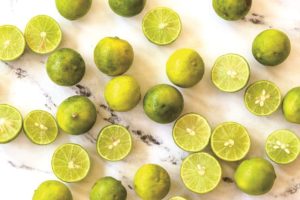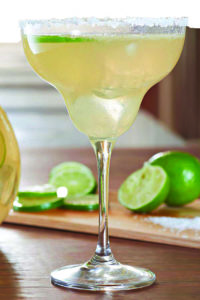I’ve been thinking lately about the influence of the Southwest of the U.S. on my life. Having grown up in South Texas and spent tons of time in Southern Arizona, this arid part of the country has always had a hold on me. After spending the last 30-plus years on the East Coast and the Cape, I’m writing this after a cross-country drive to a house in Tucson where I’m settling into a new part-time place.
The Southwest’s spell on me is very much about food and drink. I’m sure I’m not the only one who can’t think about this part of the country without also thinking about the flavors of Mexico. And at this moment, after a long trip, and facing the task of recommending a cocktail for my Cape Cod friends to consider, it is hard not to think about the margarita.
An authentic margarita bears scant resemblance to the ubiquitous, over-confected yellow-green drink dispensed at most bars.
My version starts with a childhood memory of my father blending margaritas in an Osterizer — a sturdy two-speed blender with a solid stainless-steel base. He would blend the drinks just to the point where the ice broke into smaller chunks, then would pour the frosty-but-not-frozen liquid into traditional coupe glasses, ice and all.
That memory connects intimately to another, of the St. Anthony Club at the St. Anthony Hotel in San Antonio, Texas. Dad had been a member since the 1950s, which was no mean feat given his Mexican-American heritage and lingering discrimination in that town. In his Tex-Mex Cookbook, Texas food writer Robb Walsh describes a probably not uncommon — punctuation and all — San Antonio storefront sign declaring “We serve White’s only, no Spanish or Mexicans.”
I remember sitting with Dad at the club, where he would hold court, bantering with other members in English and with bartenders and waiters in Spanish while sipping his ice-cold margarita. The club is where I first danced with my mother (I was eight) and where I ate my first rack of lamb (a firm intervention from my dad and the waiter was the only thing that kept me from drowning it in ketchup). I do think the club was where my own interest in drinks and food started, so it holds a special place in my heart.
 The one absolute key to a good, authentic margarita is fresh lime juice — but not just any lime juice. It must be juice from the smaller key limes (or Mexican limes, as they are known in the Southwest). Buy the limes by the bagful, squeeze them, and freeze the juice in ice cube trays. You also want to use a good tequila, but it doesn’t have to be connoisseur quality. I prefer Sauza Hornitos, which is a slightly aged or reposado tequila, and, as you might guess, what my dad used.
The one absolute key to a good, authentic margarita is fresh lime juice — but not just any lime juice. It must be juice from the smaller key limes (or Mexican limes, as they are known in the Southwest). Buy the limes by the bagful, squeeze them, and freeze the juice in ice cube trays. You also want to use a good tequila, but it doesn’t have to be connoisseur quality. I prefer Sauza Hornitos, which is a slightly aged or reposado tequila, and, as you might guess, what my dad used.
The real wild card in making your margarita is the orange liqueur. My parents used to buy a Mexican knockoff of the French Cointreau, called Controy, which still exists, but now under the copyright law-friendly name Naranja (which means “orange” in Spanish). Then there is Cointreau itself, which is never a bad idea. As a fallback, you could use the more generic, and sweeter, Triple Sec.
In recent times, I have also experimented with adding agave syrup (made from the same plant from which tequila is distilled). This makes a sweeter margarita.
People have strong opinions on the right proportions of the margarita’s three ingredients. It is most common to see equal parts of lime juice, tequila, and orange liqueur. I think there are times when two parts tequila to one part juice and one part orange are right, although this version should be sipped, not quaffed, and might prove too much for the faint of heart. The equal parts margarita is your surest bet.
 My recipe resembles the “San Antonio Margarita,” which made its way from restaurateur Mario Cantu to Sam Sifton, who put it in the New York Times a few years ago. I like that it makes a quart pitcher to serve six to eight. Where the Times version includes the addition of six ounces of water to help smooth out the margarita, I consider that optional — after all, you’re serving the drink over ice, and as you sip it, the drink will mellow.
My recipe resembles the “San Antonio Margarita,” which made its way from restaurateur Mario Cantu to Sam Sifton, who put it in the New York Times a few years ago. I like that it makes a quart pitcher to serve six to eight. Where the Times version includes the addition of six ounces of water to help smooth out the margarita, I consider that optional — after all, you’re serving the drink over ice, and as you sip it, the drink will mellow.
The San Antonio Margarita
10 oz. tequila
10 oz. orange liqueur
10 oz. fresh-squeezed lime juice (preferably from key limes)
Combine the tequila, liqueur, and lime juice in a pitcher and stir. Add up to six ounces of cold water if you want to temper the alcohol more. Chill until ready to use. Serve over ice in glasses with salted rims. Garnish with a lime wedge. Salud!
